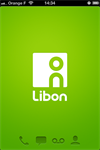Virgin Media, which offers WiFi on 72 London Underground stations and plans to add a further 48 stations in the next few weeks, has agreed a wholesale deal with EE and Vodafone.
It means that Vodafone, Orange, T-Mobile and EE mobile customers will be offered free WiFi connectivity when this year’s free access ends.
Article rating: No rating

Finnish company Jolla, which launched in July with plans to release a smartphone with a user interface based on the MeeGo platform, has demonstrated its user interface and the ‘Sailfish’ OS at the Slush start-up conference in Helsinki.
In addition it’s announced a forthcoming software development kit for Sailfish.
Article rating: No rating

Orange Vallée, the part of France Telecom-Orange responsible for innovation and development, has released a free cross-network mobile app that enables users to make free voice calls, send messages and receive voicemail messages.
It’s called Libon and is available as an iOS app in 90 countries including the UK; an Android version is planned for early next year.
Article rating: No rating
How Mobile Apps are changing the way the military operates in the field
Kevin Deal, Vice President of Aerospace & Defence at IFS North America, writes:
It is difficult to believe that the idea of a hand-held mobile phone was an alien concept only a few short decades ago. From brick-sized analogue devices to wafer thin smartphones with processing capabilities comparable to those of laptops, new technology is constantly pushing the boundaries of what we can expect from our phones. And, in a reverse of the normal pattern of technology innovation, a development driven by consumers is set to have an important impact on aerospace and defence (A&D).
Article rating: No rating
Figures from mobile security company AdaptiveMobile suggest that 148.43 million spam texts are received by British consumers every month, with 14.2 million people being bothered by SMS spam at least once a week.
The study, which was carried out last month by YouGov, found that consumers rated unwanted text messages as the most annoying form of spam (41%) ahead of email (36%) and direct mail through the letterbox (17%).
Article rating: No rating